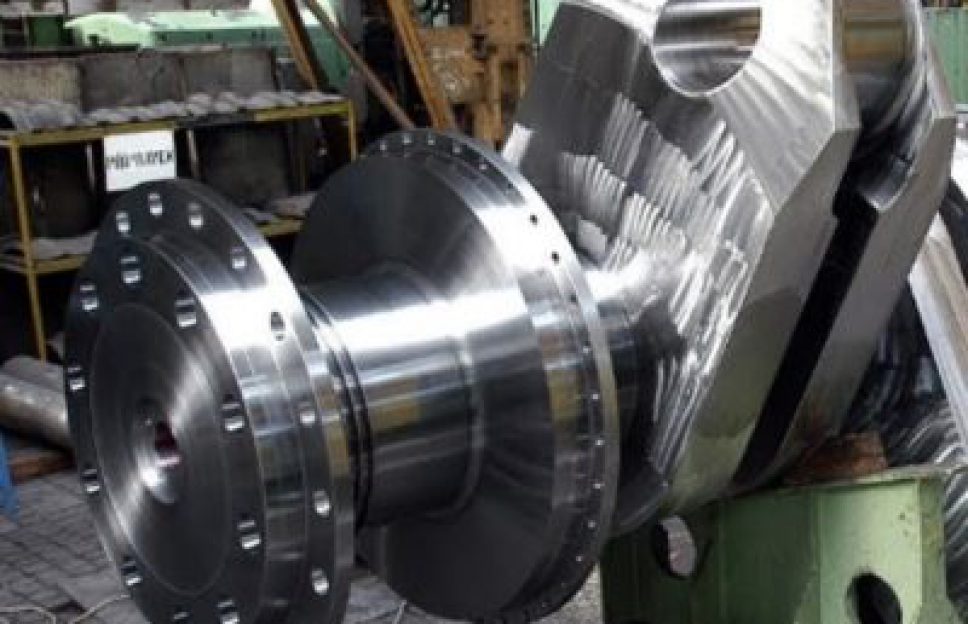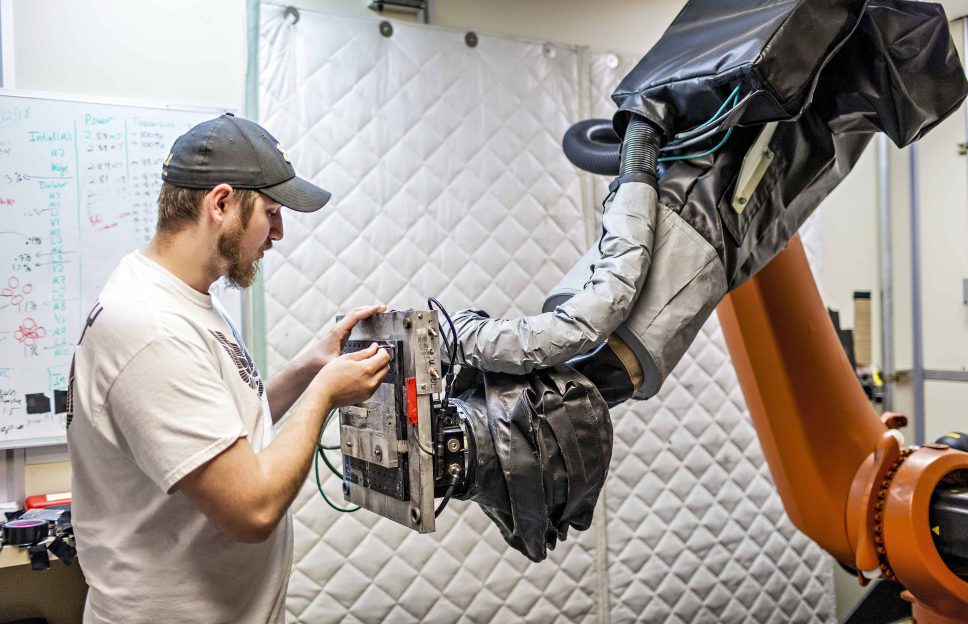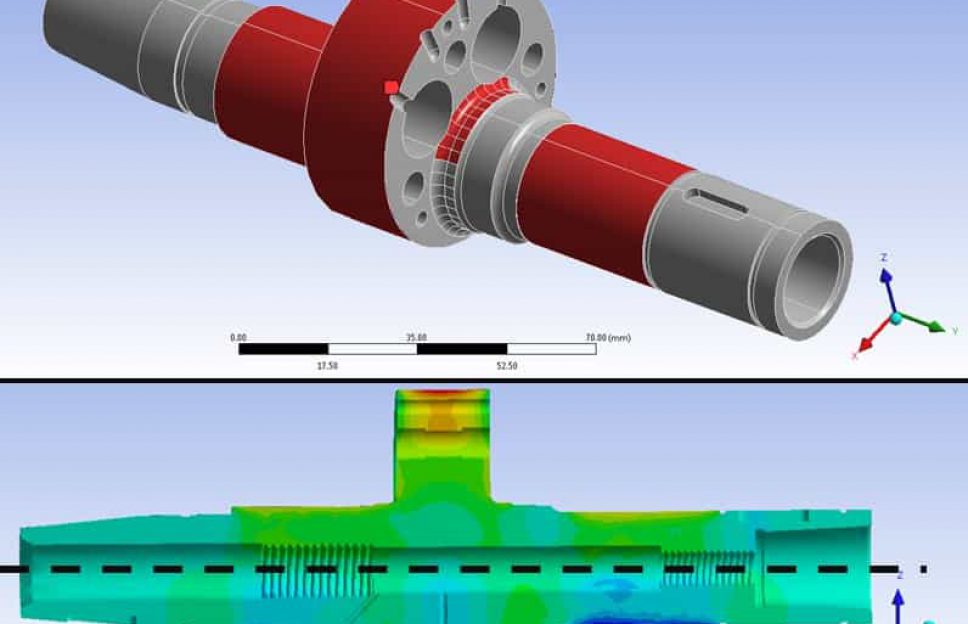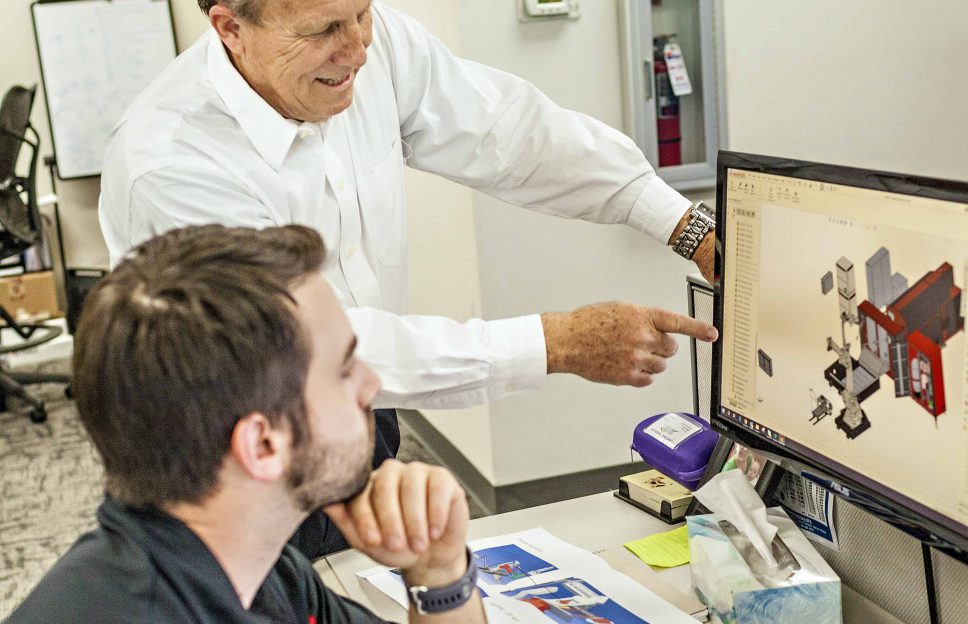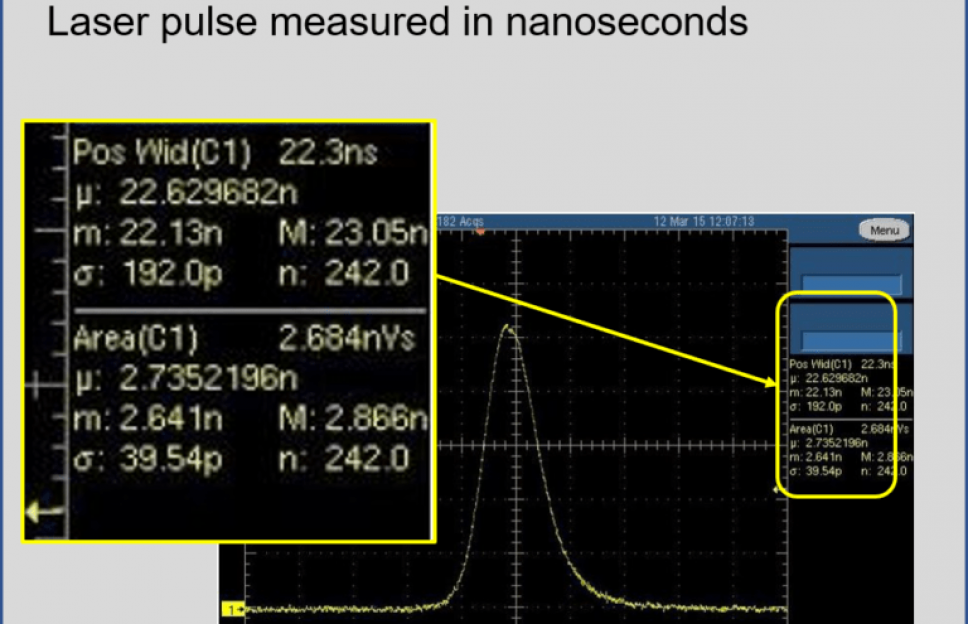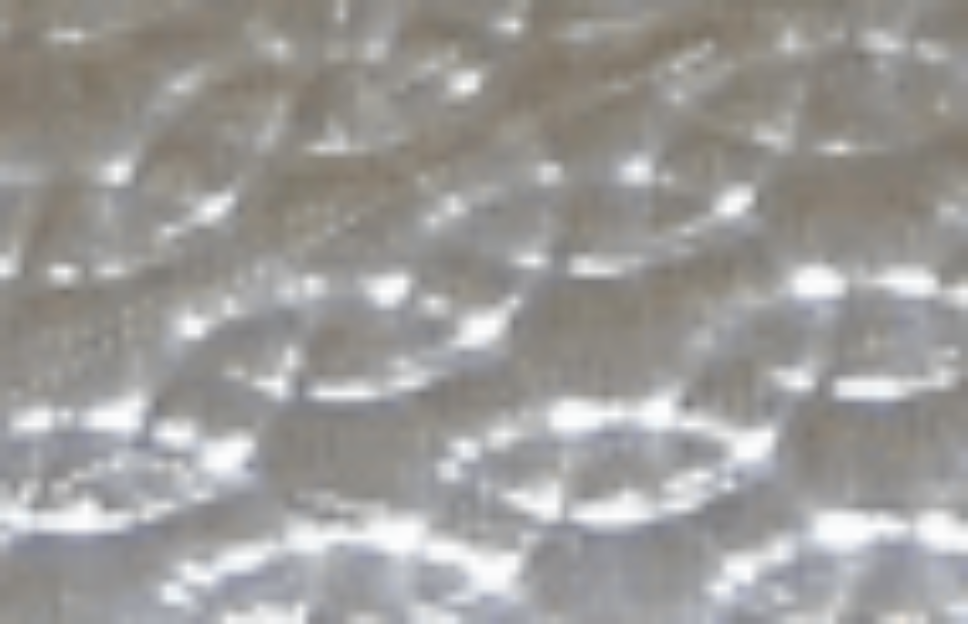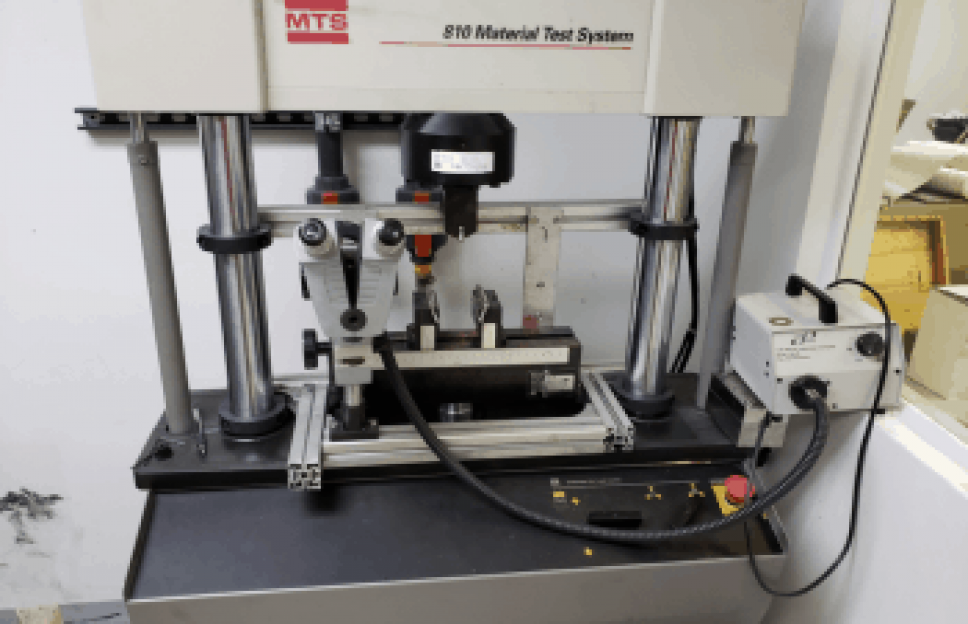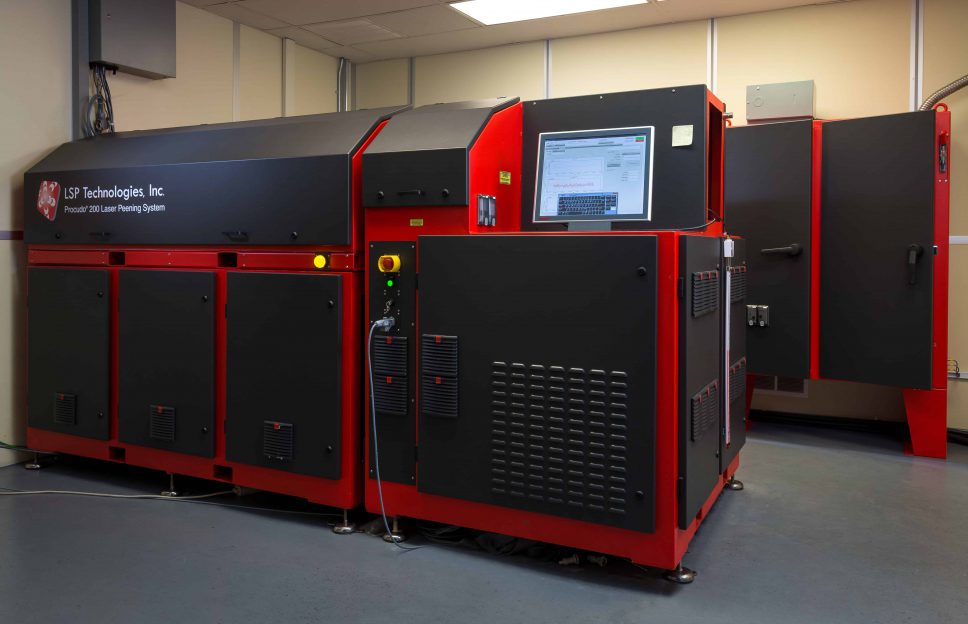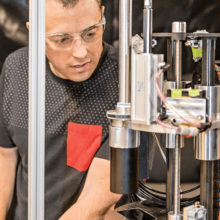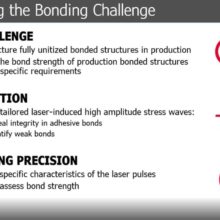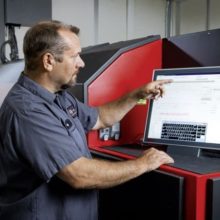- We examine the characteristics of your part closely, tailoring our work to your part’s alloy, thickness, and shape
- Failure issues are pinpointed (corrosion, cracking, FOD, fretting, etc.)
- We determine critical fatigue locations and establish proper treatment pattern and depth
- You receive your custom quote based on your component and a solution that meets your requirements and budget
How Laser Peening Works
Powerful Protection Against Metal Fatigue
Why Choose LSP Technologies?Deterrence Against Metal Fatigue
Laser shock waves penetrate deep into metal surfaces. creating residual stress patterns to counteract corrosion, cracking and other symptoms of metal fatigue.
Here’s how we deliver protection to extend the life of mission-critical metal components by 10x or more.
See New Animated Video, How Laser Peening Works
Combining live action, animation and slow-motion simulation, our new video shows how laser peening penetrates deep into metal surfaces, counteracting corrosion, cracking, and other symptoms of metal fatigue.
How Laser Peening Works, Step by Step
This step-by-step approach shows how the laser peening process
applies pressure to metallic structures, represented as the blocks of a grid.
Step 1
The high energy laser beam hits the metal surface.
The red shading and arrows represent
the laser pulse arriving at the metal surface.
Step 2
A plasma shock wave applies pressure
to the metal, reshaping its microstructure.
In isolation, we can see that the force of the shock wave has mechanically distorted and
expanded metal grain shapes. The grid they occupy looks wider and flatter.
Step 3
Distorted metal pushes up against
surrounding metal structures.
If we look at the plastically deformed section as it continues to live on in the overall grid,
we can see that its larger shape pushes up against the parts of the metal not affected by laser peening.
Step 4
Surrounding metallic structures adapt to the expanding metal.
The surrounding metal elastically adapts to the enlarged volume
of the metal affected by laser peening.
Step 5
Healthy compressive residual stresses form.
The arrows show how compressive residual stress affects metal after laser peening.
The laser peened region in red has become larger, pushing outward.
The surrounding metal regions are trying to push inward to get back to their original shape.
The sum of these two opposing forces comprise compressive residual stress,
which helps prevent surface corrosion and cracking.
The Result
Deep compressive stresses extend
the useful life of components.
Laser peening produces measurable compressive residual stresses typically 1-2 mm deep below the metal surface.
In some cases laser peening penetrates up to 12 mm below the surface.
These deep compressive residual stresses counteract tensile stress
on parts operating at high speed or subject to other forces that lead to corrosion and cracking.
Laser peening protects mission-critical components from metal fatigue 10 to 15 times longer than competing processes, fighting many symptoms of metal fatigue.
And since laser peening is a mechanical surface enhancement process, not a heat treatment, it preserves metal shapes and properties.
A tightly controlled pulse of high-energy laser energy generates shock waves that propagate through the target material and produce compressive residual stresses.
For a Deeper Dive into How Laser Peening Technology Delivers Powerful Results
Our brochure tells the story of Laser Peening — the process, the benefits, how it prevents metal fatigue, and an introduction to Laser Peening Equipment
- 1. Develop Quote
- 2. Experience and Modeling
- 3. Design Your Laser Peening Solution
- 4. Sample Testing
- 5. Production Planning or Custom Solution
- Pinpoint components stresses that contribute cracking, corrosion, and fatigue failure
- Apply our in-depth library of laser peening processes to your part’s alloy, thickness, and shape
- We simulate part operations and hazards with Finite Element Analysis (FEA) modeling
- Pinpoint precise surface areas for laser peening
- Adjust parameters of proper laser energy, pulse width, and beam size
- Prescribe a laser peening pattern to produce the life-extending benefits you require
- Baseline fatigue strength life is measured for the existing part
- We apply an engineering laser peening solution to a representative coupon part or selection of parts
- Treated parts are examined in our in-house materials testing lab, an external lab, or your testing lab for verification
- We use laser peening depth and residual stress patterns to estimate life extension – as much as 10 times the usual life of untreated parts
- Together, we develop a production or custom plan and set of quality standards to guarantee performance results for your part
- We can provide laser peening services at the LSP Technologies, Inc. HQ in Dublin, Ohio
- Or, we can install a complete laser peening system at your facilities using our equipment
-
![How Laser Peening Works - Coating the part with a layer of water]()
We spray a consistent layer of water over the part, forming a transparent overlay.
-
![How Laser Peening Works - a plasma ignites, focusing pressure into the metal surface]()
The energy of the laser beam sets off an expanding plasma at the surface of the metal. Water contains the resulting shock wave into the surface of the part.
-
![How Laser Peening Works - a precise pattern of protection for metal surfaces]()
Repeated laser peening in a proven pattern provides consistent protection of a part's targeted areas.
How we dial in precise laser peening for alloys and components
For an in-depth look into the precision and flexibility of laser peening for individual parts, learn more about Laser Peening Parameters.
What's new at LSP Technologies?
Want to find out more?
Every customer, and every part is different, so we focus on enhancing the safety and reliability of your components.
We begin by understanding your parts, their purpose, and operating conditions.
Then we use computer modeling, as well as our extensive library of industry applications to show how laser peening can meet your needs.
Let us show you how laser peening can extend the operating life of your part by 3-10 times.










